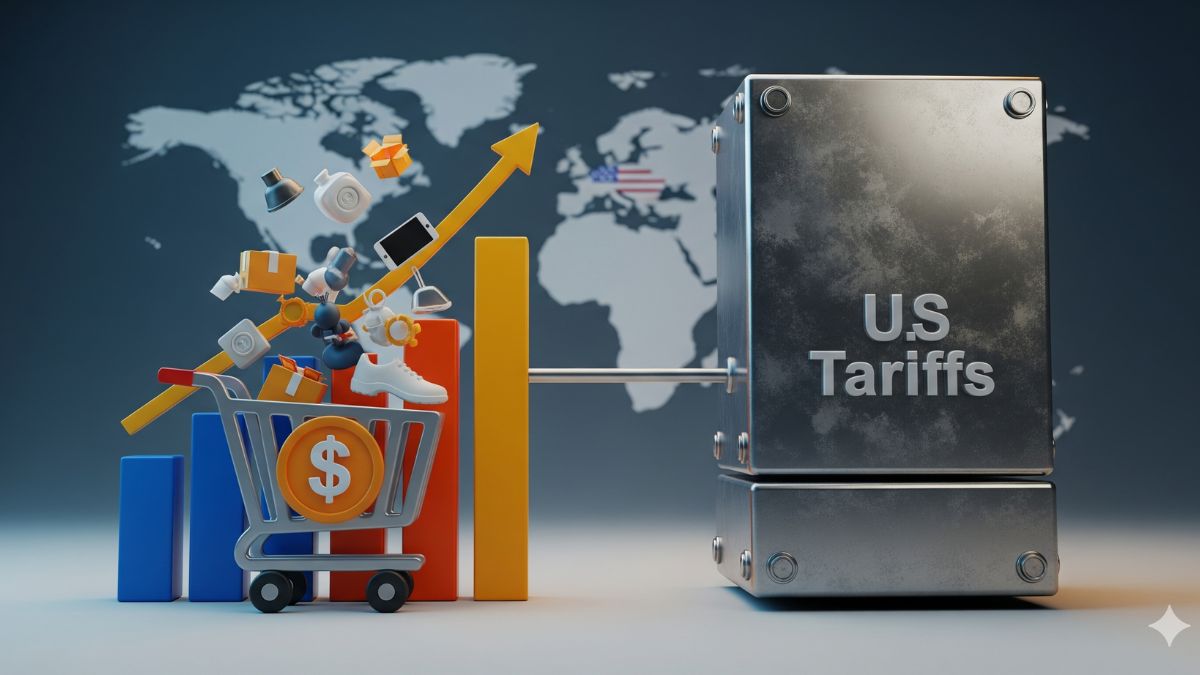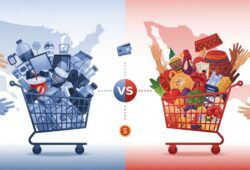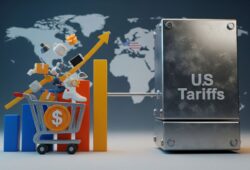
What can brands do in the face of an adverse economic environment? How can they plan and react to the imposition of tariffs by Donald Trump’s government? The latest Statista dossier warns that the increase in tariffs could completely reshape the landscape of e-commerce in the United States. With projections pointing to a loss of up to $320 billion in the e-commerce market by 2029, companies face a “tariff storm” that will require profound changes in their pricing, sourcing, and marketing strategies.
READ ALSO. Walmart reports 2025 financial results: What impact did Trump’s tariffs have?
What effects of tariffs will e-commerce face in the coming years?
The high tariff scenario projected by Statista includes:
- An increase of up to three times in the average tariff rate, bringing it to the highest level since 1969.
- A greater impact on categories highly dependent on imports, such as fashion and home goods.
- Increased pressure on international supply chains, which are already facing logistical and cost challenges.
In fashion, for example, the average tariff would reach 12.55%, well above the 1.83% paid by other imports, significantly raising the cost of clothing and footwear.
How can brands mitigate the effects of tariffs?
The dossier outlines several strategies that e-commerce companies are considering to adapt:
- Nearshoring to Canada and Mexico to take advantage of trade agreements and reduce delivery times.
- Diversifying suppliers outside of Asia, exploring Latin America and Eastern Europe.
- Optimizing shipping and packaging to reduce customs and transportation costs.
- Developing “Made in USA” product lines to attract consumers looking to avoid surcharges.
These measures aim not only to reduce tariff exposure but also to improve operational resilience.
How should e-commerce pricing strategies adapt?
One of the key challenges will be managing consumer price elasticity. The study reveals that:
- 44% of shoppers accept a maximum increase of 5%.
- 32% are unwilling to pay more.
- During events like Prime Day, consumers demand more aggressive discounts and take the opportunity to stock up.
This means brands will need to find a balance between absorbing part of the tariff cost and maintaining healthy margins, using dynamic pricing and strategic promotions.
Why will logistics and compliance be critical to survival?
According to Statista, the five major “pains” of e-commerce under high tariffs include:
- Inventory management to anticipate price hikes or avoid overstocking.
- Stricter customs processes, with greater time and cost.
- More complex and costly compliance requirements.
- Dependence on logistics operators (3PL) in alternative markets.
- Changing tariff policies that hinder planning.
Companies will need to invest in traceability technology, strengthen alliances with customs brokers, and have contingency plans for regulatory changes.
What role does consumer communication play in the face of tariffs?
Changes in shopping habits will be a decisive factor. Data shows growth in:
- Preference for Made in USA products.
- Early purchases before price increases.
- Greater sensitivity to final costs compared to previous years.
This forces brands to clearly communicate the added value of their products, strengthen consumer trust, and differentiate themselves not only by price, but also by quality, delivery speed, and supply chain responsibility.
Adapt quickly to avoid losing market share
The “tariff storm” posed by Donald Trump could redefine U.S. e-commerce in just a few years. The companies that survive will be those capable of:
- Reconfiguring their supply chains to reduce dependence on high-tariff countries.
- Innovating in their pricing and promotion strategies.
- Improving logistics efficiency and regulatory compliance.
- Maintaining a solid connection with a more strategic and demanding consumer.










